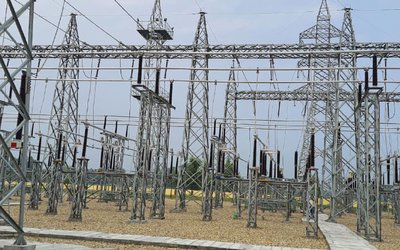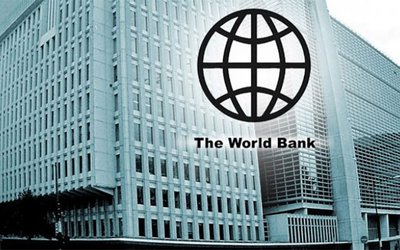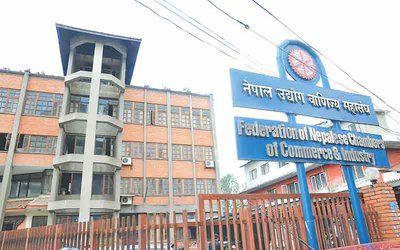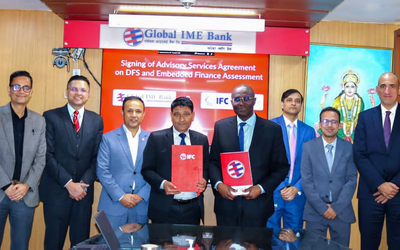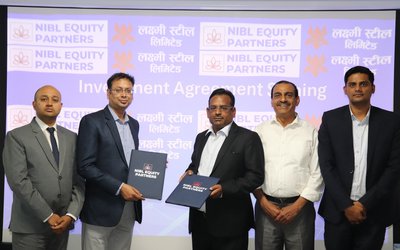
With the recent release of economic forecasts of the Central Bureau of Statistics showing better growth prospects , political leaders and government officials are in a jubilant mood about achieving the growth rate of 5-plus percent in the fiscal year 2014.
As the current growth is attributed to good monsoon and increased inflow of the remittances, the forecast of recovery will crumble in case of reversal in the weather conditions and inflow of the remittances next time. With the generally low investment in infrastructure projects like road and hydropower, compounded with low private sector investments, Nepal’s economy does not have the necessary elements for sustaining high growth. Nepal’s growing trade gap, which is alarmingly high, can ruin the country’s economy at any time.
When the government’s capital expenditure is below 7 percent and excessive buildup of liquidity is present in the financial system, there is little sign to be optimistic about the economic growth prospects of the moment. Nepal, a least developed economy, requires a sustained momentum to graduate its status to that of the developing countries. Still worse is the low institutional capability to sustain a high growth.
One of the main worries of the current economy is the declining capital expenditure. The share of capital expenditure in the GDP was 3.4 percent in 2010/11. It fell to 3.3 percent and 3.1 percent in 2011/12 and 2012/13, respectively. Major chunks of capital expenditure are being spent in the last quarter of the fiscal year. In the last fiscal year, only 3 percent of the budget was spent in the first quarter, 11 percent in the second quarter, 31 percent in the third quarter, and remaining 55 percent in the last quarter.
“The structured bias toward consumption led growth- as opposed to investment- is expected to continue with relatively low levels of both public and private investment,” reveals World Bank’s Economic Update (April, 2014). “Nepal, for the second year in a row, should achieve twin surpluses reflecting healthy developments (particularly domestic revenue mobilization) but also deep absorptive bottlenecks, which are really missed opportunities for growth. First, the slow pace of budget execution has translated into a sizeable budget surplus that is not leveraged to build the country’s infrastructure. Second, the sharp increase in remittances has more than made up for Nepal’s chronic trade gap but it has also resulted in a buildup of liquidity in the financial system that may be in excess of the private sector’s ability to translate it into sound credit.”
Despite the recent projections of the Central Bureau of Statistics showing prospects for the Nepalese economy to see a 5-plus percent growth, the World Bank and the Asian Development Bank have projected that the economic growth of will be 4.5 percent for the current fiscal year. Inflation will climb close to double digits and remain stable, according to the economic update.
“Nepal is losing its market share in the global market due to lack of efficiency and political instability. The government should increase investment in infrastructure,” said Johanees Jutt, country director of the World Bank for Nepal and Bangladesh. “The private sector investment is crucial to create job opportunities and boost productivity. “
As two major agencies are projecting Nepal’s economic growth as 4.4 percent, the Central Bureau of Statistics (CBS) said Nepal’s economy will grow during the current fiscal year by more than 5 percent, for the first time in half a decade. Disclosing its preliminary estimates of 5.1 percent economic growth in the fiscal year 2013/14, CBS said the country is achieving this high growth rate for the first time since 2007/08.
“The economy, which has been seeing slow growth during the decade, will breathe new energy this year,” said Bikash Bista, director general of CBS.
The service sector contributed 50 percent to Gross Domestic Product (GDP) in 2012/13 while agriculture and manufacturing contributed 34 percent and 14 percent respectively. Contribution of agriculture to GDP somehow shrank towards the end of the fiscal year to 33.73 percent. Similarly, services and manufacturing will account for 52.23 percent and 14.04 percent respectively. The dismal performance in the manufacturing sector continues as the sector will grow marginally by 2.69 percent in 2013/14.
In fiscal year 2012/13, services, agriculture and manufacturing recorded growths of 3.6 percent, 4.9 percent and 1.6 percent respectively. CBS has disclosed that the revised annual growth rate of last fiscal year remained 3.46 percent. Similarly, the country posted a 4.61 percent growth rate in 2011/12, as per final figures released by CBS.
According to preliminary estimates of CBS, the country will see consumption worth Rs 1,756 billion, which is 91.08 percent of GDP. “High consumption means less savings and that impacts on capital formation,” said economist Chandan Sapkota to a local paper. “Remittance is backing consumerism and that is supporting service sector growth but hurting national savings.”
Although the growth is picking up, Nepal’s development partners have expressed dissatisfaction over slow capital expenditure and the government´s weak performance in executing development projects. “The government is losing absorption capacity because of weak institutional capacity of implementing agencies,” said Zutt, country director of the World Bank.
“Nepal is doing well in human development index (HDI) and other social indicators. But it is not doing will in terms of economic development because of huge infrastructure gap,” Zutt said at the meeting of Nepal Portfolio Performance Review (NPPR). The World Bank’s country director stressed the need to focus on hydropower generation and expansion of road network to fill up the infrastructure gap and encourage private sector investment.
Country director of Asian Development Bank Nepal Mission Kenichi Yokoyama also viewed that the share of capital expenditure in GDP has been falling since 2010/11. “Nepal needs to enhance its capacity for capital expenditure,” said Yokoyama.
Nepal needs to enhance the institutional capabilities to achieve a sustain economic growth which is a prerequisite for it to graduate from its Least Developed Country status to that of a developing country.
- IME GROUP: Expands Into Paper Industry
- Mar 24, 2025
- CPN UML: Instigated By India
- Mar 23, 2025
- ADB’S CHIEF ECONOMIST: Nepal Reduces Poverty
- Mar 11, 2025
- FM DR. DEUBA: A Successful Visit
- Mar 11, 2025
- MD GHISING: Target Of Personal Grudge
- Mar 09, 2025
